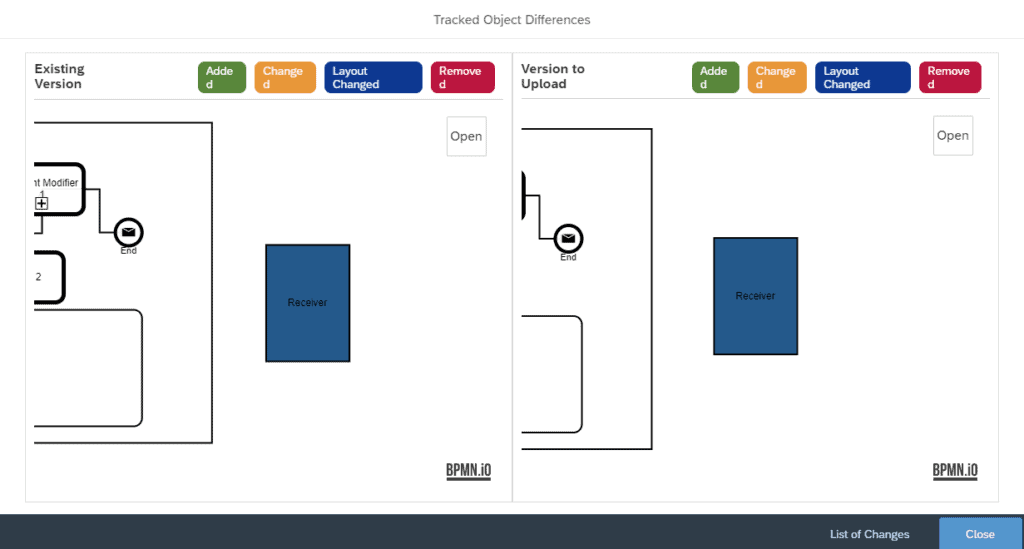For me, it was a different Christmas. We just stayed at home and celebrated it with the 3 of us. It was nice to be at home and not having to stress around to find to meet all the relatives.

After unwrapped all our presents on the 24 of December, where we in Denmark celebrate Christmas. I got a Slack message that we have released the last version of Figaf IRT Tool 2.
There will probably not be many that will implement it over the Christmas period but we needed to get it out to support the few customers that were looking for some of the features in the release. To see what it contains see below.
Update: The first customer already upgraded and it seems to be working fine.
And if there are some urgent bugfixes for customers, we may add another patch. But for now, the release is done.
What now, No more Figaf Releases?
We already planning the next release which will be 2101. We will switch to using the same notation as SAP Cloud to give an easier understanding of the relationships between releases.
For now, we have been making main releases and patches from time to time, which has been a bit of a challenge about when it should be a new release and when it was just a patch. With the new notation, we will be able to release functions and features much easier.
One of the big things in the next release is we have upgraded all our Spring dependencies so we have a newer release of all components.
- Our main focus was to be able to support SSO which most customers are asking for.
- We also got a requirement where we needed to have the newest release of some parsers. It supports the transport and configuration of API management proxies and KVM.
Increased velocity
I do believe the faster we are able to deliver tested functionalities for customers the easier it becomes to run SAP PI/PO or SAP CPI.
We have currently some gap between when we can develop a feature and then to make sure QA is followed correctly and package it to a release. That gives some long lead times for features already implemented. And a lot of confusion about what releases we have.
Sure we have been able to release small bugfixes within a few hours for customers but it required a lot of teamwork to merge and test.
We are planning to set up a much better DevOps infrastructure so we can release code much easier and perform the required test automatically. It will be a journey, we have a lot of the components in place but we need to build some good pipelines, docker image, testing and more.
I would expect that we will have multiply patches for each month with new functionality as it is being delivered. The upgrade process should be as simple as possible and without affecting business.
Cloud
We would be investing more in getting our cloud SaaS offering working better. We recommend clients to go for run Figaf on their own Azure/AWS or internal server. Depending on how well connected the people we deal with are in the company, it can take some time to get access to install Figaf on a system. Our latest offering is to give users access to use Docker images which takes 20 minutes to install if you have an Azure account.
We will need to make a few improvements to our cloud offering over the next months to improve
- Data privacy it has access to your production systems. We only provide access to our core developers to perform some troubleshooting, if we have any issues. But we need to improve the procedures since the integration data contains lot of confidential data.
- Monitoring, uptime, and SLA.
- Scalability
- Multi-cloud
You can signup for the cloud offering and try it out. You can signup here and if you want to see how to get started. See the 10 minutes video about how to set up monitoring of SAP CPI via our cloud offering.
What is in the patch
I’m glad you asked.
You can see all release notes in the manual and how to configure it.
The main part of the features is regarding SAP CPI Testing, that we have improved a lot in December to help our customers make their SAP CPI Testing much faster.
There is also a number of bug fixes and small improvements around the processing.
SAP CPI Testing improvmenets
We have been adding a number of features around SAP CPI testing to make it much easier to create test cases for SAP CPI.
- In one iflow support both testing with and without mocking of services
- More flexible support which parts of the iflow you want to perform testing on. So you can now select first/last, ignore certain steps or select which steps to process.
- We created a shared configuration that makes it possible to create individual test cases for iflows.
- In the other release we have also been adding improvements to the way CPI testing is performed so you can make a lot more test cases and run them easier.
In the beginning of Janary I’ll create a video about what now is possible with the test automation parts.
CPI Transport validation
Once you transport SAP CPI iflow, you can compare how the new archive is different from what already is in QA or Production. This also works for SAP API management. It makes it a lot easier to perform the approval, if you know precisely what has been changed.

And once you perform the comparison you can use the Diff2HTML that shows you a diff list of all the changed files in the transport. We got the idea for this from the RealCore Dashboard that uses the same libraries.

You can also use the visual BPMN model for compare the iflows. It is much easier to find what is changed in a BPMN model.

There is some improvements in the user roles so the licensing process works better.
Thanks for following
We appreciate that you have taken an interest in our product and want to know how it can solve our challenges with SAP Integration. We hope you get to try the Figaf DevOps Tool.
You can as always signup for our free trials and run Figaf on your laptop. It takes 10 minutes to get started. Just click “Try Figaf DevOps Tool”.

